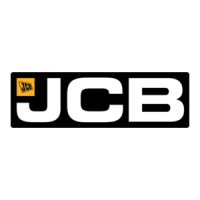20 - 2
Section C Electrics
9803/3280
Section C
20 - 2
Issue 1
Service Procedures
Battery (cont’d)
Testing
This test is to determine the electrical condition of the
battery and to give an indication of the remaining useful
‘life’.
Before testing ensure that the battery is at least 75%
charged (SG of 1.23 to 1.25 for ambient temperature up to
27°C).
Ensure that the battery is completely disconnected from the
vehicle.
Connect up the battery tester (part no. 993/85700) as
follows:
1 Set the CHECK/LOAD switch A to OFF.
2 Set rocker switch B to the battery voltage (12V).
3 Connect the red flying lead to the battery positive (+)
terminal and the black flying lead to the battery negative
(-) terminal.
4 Set the CHECK/LOAD switch A to CHECK to read the
battery no-load voltage which should be at least 12.4
volts.
Fault Diagnosis
Battery Tester Readings
1 CHECK: 0 - 12.6 Volts
LOAD: less than 6 Volts
2 CHECK: 6 - 12.4 Volts
LOAD: less than 9 Volts and falls steadily but remains
in yellow zone.
3 CHECK: less than 10 Volts
LOAD: less than 3 Volts
4 CHECK: more than 11 Volts
LOAD: 6 - 10 Volts steady
Specific Gravity Testing
The specific gravity of the electrolyte gives an idea of the
state of charge of the battery. Readings should be taken
using a hydrometer, when the electrolyte temperature is 15
°C (60 °F). If the battery has recently been on charge, wait
approximately one hour (or slightly discharge the battery) to
dissipate the surface charge before testing.
5 Set the CHECK/LOAD switch A to LOAD and hold down
for 5 - 10 seconds until the meter reading stabilises. The
reading should be at least 9 volts.
Note: Do not hold the switch in the LOAD position for more
than 10 seconds.
6 If the foregoing tests are unsatisfactory, consult Fault
Diagnosis below.
Remedy
Renew battery
Recharge and re-test. If tests still unsatisfactory renew
battery.
Indicates battery has been over-discharged and unlikely
to recover. Renew battery.
Charge battery which will probably recover.
Readings should be as tabulated and should not vary
between cells by more than 0.04. A greater variation
indicates an internal fault on that particular cell.
If the electrolyte temperature is other than 15 °C (60 °F) a
'correction factor' must be applied to the reading obtained.
Add 0.07 per 10 °C (18 °F) if the temperature is higher than
15 °C (60 °F) and subtract the same if the temperature is
lower.
239510
B
A
Specific Gravity at 15 °C (60 °F) Fully Charged Half Discharged Fully Discharged
Ambient temperature up to 27 °C (80 °F) 1.270 - 1.290 1.190 - 1.210 1.110 - 1.130
Ambient temperature above 27 °C (80 °F) 1.240 - 1.260 1.170 - 1.190 1.090 - 1.110

